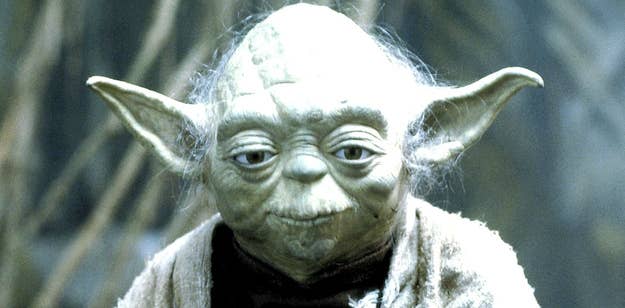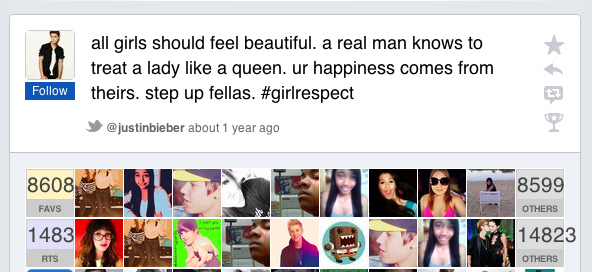A group of researchers at Cornell may have explained the mystery of the catchphrase. By dumping a thousand notable movie quotes into a program that runs them against a corpus of typical English, they were able to quantify what makes a brainworm — that is, what makes a catchy phrase, be it a line in a movie, a quote from an ad, or a shareable Facebook status.
The paper is called 'You had me at hello: How phrasing affects memorability' and it's a great read. Here, according to SCIENCE, are the rules for coming up with the world's best/most annoying catchphrase.

1. Use interesting words (but not long ones)
More than anything else, researchers noticed that, compared to typical phrases, catchphrases are immediately distinctive. That sounds obvious, but in this context "distinctive" has a very specific meaning: unusual as compared to thousands of old, generic news stories.
In a comparison of phrases, 60% of the time the one that was more distinctive — that is, the one with the less common words — was more memorable, too.
Ex: "Never send a human to do a machine’s job," from "The Matrix," probably wouldn't be as catchy if it were "Never send a person to do a machine’s job."
2. Use boring syntax
Not all distinctiveness is good. The easiest way to make a phrase stand out initially is to order the words strangely, but this will actually make it less memorable. The paper says "memorable quotes appear to follow the syntactic patterns of 'common language' as closely as or more closely than non-memorable quotes," meaning that simpler word orders and sentence structures are almost always catchier. It helps if the phrase can roll off the tongue, basically.
Ex: "I think this is the beginning of a beautiful friendship" vs. "This, I think, is the beginning of a beautiful friendship."
3. Keep it short
This one was so obvious that the researchers took it for granted. A long catchphrase isn't a catchphrase.
Ex. "May the Force be with you." No fat on this steak.
4. Don't make it about "him" or "her"
The more people can directly relate to a quote, the more popular it will be. If you use "him" or "me" or "I," you limit how portable the phrase is, and how many contexts it can be used in. Same goes got "a" and "an" versus "the." Keep it general! ("You" is still OK, assuming you mean it like I'm using it here. You: the person listening, and all people who may ever listen.)
Quotes with fewer personal pronouns were judged more memorable about 60% of the time.
Ex: "Well, nobody's perfect." Here, "nobody" is literally all-inclusive.
5. Live in the present
People hate the past! At least when they're parroting quotes. Using the past tense is probably incongruous with a lot of conversations — it makes phrases sound like they refer to actual, specific things. Think Buddha quotes. All hope arises , a jug fills , death is not to be feared, etc. Is, not was.
Ex: "There's no place like home." That's just a true thing. "There was no place like home." sounds like you're just about to tell a sad story about how your home burned down.
6. Use lots of "front sounds"
This is the coolest one. According to the study, good quotes use certain parts of the mouth:
Memorable quotes — after curse-word removal — use significantly more “front
sounds” (labials or front vowels) and significantly fewer “back sounds”
Labial sounds come from the lips, and include m, p, f, v, b. They're kind of hard-sounding, I guess? Hissy? Dunno. Just use those letters a lot.
Ex. "May the force be with you." Look how labial!
***
The paper focuses on movie quotes, which are intrinsically odd. They come from inside very specific narratives and contexts, which they have to somehow escape. Maybe that's why you always want to tell the drunk quote-bros at the bar to shut up and stop repeating lines from Anchorman: to the people in the bar who've seen the movie, all they're really saying is "me too;" to everyone else they're just noise. The main rule, the one that governs all six above, is probably this: Make sure the quote works on its own. If it sounds like a zen koan, or a motto, it's probably good.
The AFI's "most memorable" movie quote, topping a list of 100 other extremely recognizable ones, follows the rules pretty closely, except for its opening pronoun: "Frankly, my dear, I don't give a damn." Margaret Mitchell is still Queen of the Catchphrases.

These rules seem like they ought to apply to Twitter, too, but as far as I can tell they don't. The most popular tweets on Favstar don't adhere to almost any of the rules — they're clumsy, prescriptive, and mostly just said by famous people. But I suppose tweets don't need to be quotable, exactly. They just need to be tweetable.
